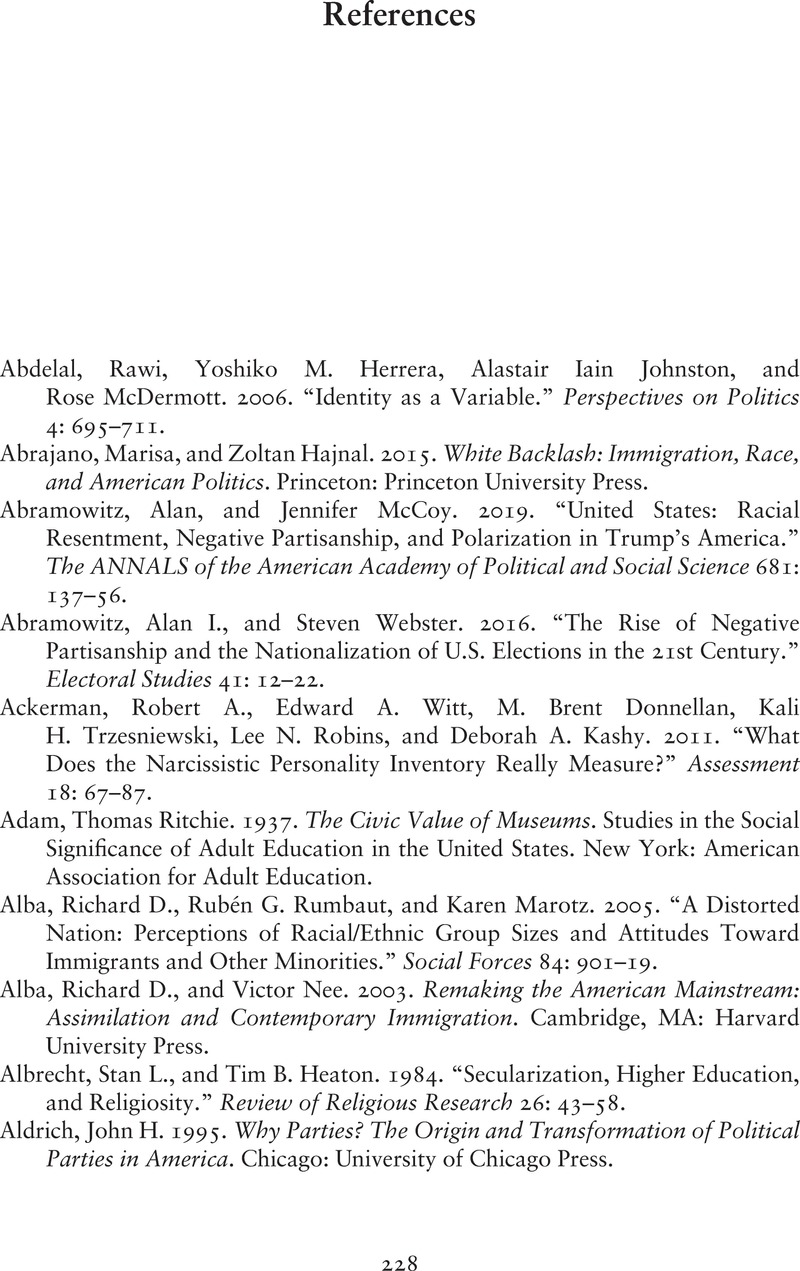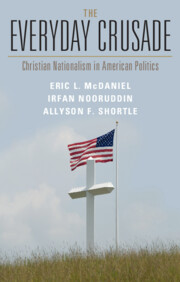Book contents
- The Everyday Crusade
- The Everyday Crusade
- Copyright page
- Dedication
- Contents
- Figures
- Tables
- Preface
- Acknowledgments
- Introduction
- 1 Myths, Gods, and Nations
- 2 Who Are the Believers?
- 3 Who Dwells in His House?
- 4 What Do We Owe Strangers?
- 5 Evangelizing American Religious Exceptionalism
- 6 Governing the Temple
- 7 The View from the Back Pews
- Conclusion
- Appendix
- Notes
- References
- Index
- References
References
Published online by Cambridge University Press: 28 April 2022
- The Everyday Crusade
- The Everyday Crusade
- Copyright page
- Dedication
- Contents
- Figures
- Tables
- Preface
- Acknowledgments
- Introduction
- 1 Myths, Gods, and Nations
- 2 Who Are the Believers?
- 3 Who Dwells in His House?
- 4 What Do We Owe Strangers?
- 5 Evangelizing American Religious Exceptionalism
- 6 Governing the Temple
- 7 The View from the Back Pews
- Conclusion
- Appendix
- Notes
- References
- Index
- References
Summary

- Type
- Chapter
- Information
- The Everyday CrusadeChristian Nationalism in American Politics, pp. 228 - 260Publisher: Cambridge University PressPrint publication year: 2022

